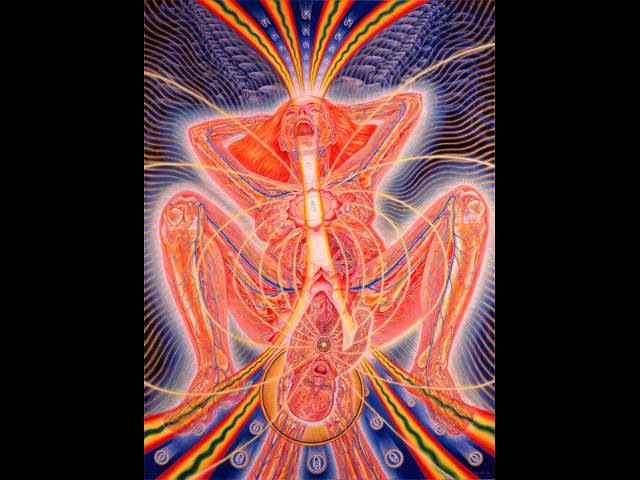Blog
On its way to the moon, Firefly Aerospace’s Blue Ghost lunar lander has taken its first space pictures as it orbits Earth.
The Texas-based company has been sharing the breathtaking videos and images in the weeks since Blue Ghost’s launch on January 15. The lander was part of a shared SpaceX ride that also carried the private lunar lander Resilience, built by Japanese company Ispace. Packed with science payloads for NASA, Blue Ghost is taking a long, “scenic route” to the moon—and the new visuals prove just how stunning of a route it is.

Samuel Osmond Barber II (March 9, 1910 – January 23, 1981) was an American composer, pianist, conductor, baritone, and music educator, and one of the most celebrated composers of the mid-20th century. Principally influenced by nine years’ composition studies with Rosario Scalero at the Curtis Institute and more than 25 years’ study with his uncle, the composer Sidney Homer, Barber’s music usually eschewed the experimental trends of musical modernism in favor of traditional 19th-century harmonic language and formal structure embracing lyricism and emotional expression. However, he adopted elements of modernism after 1940 in some of his compositions, such as an increased use of dissonance and chromaticism in the Cello Concerto (1945) and Medea’s Dance of Vengeance (1955); and the use of tonal ambiguity and a narrow use of serialism in his Piano Sonata (1949), Prayers of Kierkegaard (1954), and Nocturne(1959).
Barber was adept at both instrumental and vocal music. His works became successful on the international stage and many of his compositions enjoyed rapid adoption into the classical performance canon. In particular, his Adagio for Strings (1936) has earned a permanent place in the orchestral concert repertory, as has that work’s adaptation for chorus, Agnus Dei (1967). He received the Pulitzer Prize for Music twice: for his opera Vanessa (1956–1957), and for the Concerto for Piano and Orchestra (1962). Also widely performed is his Knoxville: Summer of 1915 (1947), a setting for soprano and orchestra of a prose text by James Agee. At the time of Barber’s death, nearly all of his compositions had been recorded. Many of his compositions were commissioned or first performed by such noted groups and artists as the Boston Symphony Orchestra, the Philadelphia Orchestra, the New York Philharmonic, the Metropolitan Opera, Vladimir Horowitz, Eleanor Steber, Raya Garbousova, John Browning, Leontyne Price, Pierre Bernac, Francis Poulenc, and Dietrich Fischer-Dieskau.
While Barber composed a significant body of purely instrumental music, two-thirds of his compositional output was art songs for voice and piano, choral music, and songs for voice and orchestra. Some of his most frequently performed songs include both the solo voice and choral versions of Sure on this shining night (solo version from 1938 and choral version from 1961) with text by Agee; and the song cycle Hermit Songs (1953), with anonymous texts by Irish monks from the eighth through thirteenth centuries. This emphasis on sung material was rooted in his own brief career as a professional baritone in his 20s which inspired a lifelong love of vocal music. In 1935, Barber recorded his own setting of Arnold‘s “Dover Beach” for NBC, singing the vocal part accompanied by string quartet,and he was also featured weekly on NBC Radio in 1935–1936 performing German lieder and art songs. He also occasionally conducted performances and recordings of his works with symphony orchestras during the 1950s, and taught composition at the Curtis Institute from 1939 to 1942.
Barber was in a relationship with the composer Gian Carlo Menotti for more than 40 years. They lived at Capricorn, a house just north of New York City, where they frequently hosted parties with academic and music luminaries. Menotti was Barber’s librettist for two of his three operas. When the relationship ended in 1970, they remained close friends until Barber’s death from cancer in 1981.
more...Lloyd Price (March 9, 1933 – May 3, 2021) was an American R&B and rock ‘n’ roll singer, known as “Mr. Personality”, after his 1959 million-selling hit, “Personality“. His first recording, “Lawdy Miss Clawdy“, was a hit for Specialty Records in 1952. He continued to release records, but none were as popular until several years later, when he refined the New Orleans beat and achieved a series of national hits. He was inducted into the Rock and Roll Hall of Fame in 1998.
more...
Zakir Hussain Allarakha Qureshi (9 March 1951 – 15 December 2024), the eldest son of tabla player Alla Rakha, was an Indian tabla player, composer, arranger, percussionist, music producer and film actor. He was widely regarded as the greatest tabla player of his generation and one of the greatest percussionists. His music transcended genres. He brought Indian classical music to a global audience and won four Grammy Awards.
Hussain was awarded the United States National Endowment for the Arts‘ National Heritage Fellowship, the highest award given to traditional artists and musicians. He was also given the Government of India’s Sangeet Natak Akademi Award in 1990 and the Sangeet Natak Akademi Fellowship, Ratna Sadsya, in 2018.
Hussain received seven Grammy Award nominations with four wins, including three in 2024. He was described as the most recognizable exponent of the tabla by The Guardian. The New York Times marveled that the “blur of his fingers rivals the beat of a hummingbird’s wings.
more...Randolph Denard Ornette Coleman (March 9, 1930 – June 11, 2015) was an American jazz saxophonist, trumpeter, violinist, and composer. He is best known as a principal founder of the free jazz genre, a term derived from his 1960 album Free Jazz: A Collective Improvisation. His pioneering works often abandoned the harmony-based composition, tonality, chord changes, and fixed rhythm found in earlier jazz idioms.Instead, Coleman emphasized an experimental approach to improvisation rooted in ensemble playing and blues phrasing. Thom Jurek of AllMusic called him “one of the most beloved and polarizing figures in jazz history,” noting that while “now celebrated as a fearless innovator and a genius, he was initially regarded by peers and critics as rebellious, disruptive, and even a fraud.”
Born and raised in Fort Worth, Texas, Coleman taught himself to play the saxophone when he was a teenager. He began his musical career playing in local R&B and bebop groups, and eventually formed his own group in Los Angeles, featuring members such as Ed Blackwell, Don Cherry, Charlie Haden, and Billy Higgins. In November 1959, his quartet began a controversial residency at the Five Spot jazz club in New York City and he released the influential album The Shape of Jazz to Come, his debut LP on Atlantic Records. Coleman’s subsequent Atlantic releases in the early 1960s would profoundly influence the direction of jazz in that decade, and his compositions “Lonely Woman” and “Broadway Blues” became genre standards that are cited as important early works in free jazz.
In the mid 1960s, Coleman left Atlantic for labels such as Blue Note and Columbia Records, and began performing with his young son Denardo Coleman on drums. He explored symphonic compositions with his 1972 album Skies of America, featuring the London Symphony Orchestra. In the mid-1970s, he formed the group Prime Time and explored electric jazz-funk and his concept of harmolodic music. In 1995, Coleman and his son Denardo founded the Harmolodic record label. His 2006 album Sound Grammarreceived the Pulitzer Prize for Music, making Coleman the second jazz musician ever to receive the honor.
more...
John Smith Hurt (March 8, 1893 – November 2, 1966), known as Mississippi John Hurt, was an American country blues singer, songwriter, and guitarist.
more...The plane of our Milky Way galaxy extends beyond the limb of planet Earth in this space age exposure captured by astronaut Don Pettit. His camera, with low light and long duration settings, was pointed out the window of a Dragon crew spacecraft docked with the International Space Station on January 29. The orbital outpost was at an altitude of about 400 kilometers above the Pacific Ocean at the time. Motion blurs the Earth below, while the gorgeous view from low Earth orbit includes the Milky Way’s prominent satellite galaxies, known as the Large and Small Magellanic Clouds, near the upper left in the frame. Fans of southern skies can also spot the Southern Cross. The four brightest stars of the famous southern constellation Crux are near picture center, just beyond the edge of the bright horizon and shining through Earth’s orange tinted atmospheric glow.

Richard George Fariña ( March 8, 1937 – April 30, 1966) was an American folksinger, songwriter, poet and novelist. On returning to Manhattan, Fariña became a regular patron of the White Horse Tavern, the well-known Greenwich Village tavern frequented by poets, artists, and folksingers, where he befriended Tommy Makem. It was there that he met Carolyn Hester, a successful folk singer. They married 18 days later. Fariña appointed himself Hester’s agent; they toured worldwide while Fariña worked on his novel and Carolyn performed gigs. Fariña was present when Hester recorded her third album at Columbia studios during September 1961, where a then-little-known Bob Dylan played the harmonica on several tracks. Fariña became a good friend of Dylan; their friendship is a major topic of David Hajdu‘s book, Positively 4th Street: The Lives and Times of Joan Baez, Bob Dylan, Mimi Baez Fariña, and Richard Fariña.
Fariña saw a guest with a motorcycle, who later gave Fariña a ride up Carmel Valley Road, heading east toward the rural Cachagua area of Carmel Valley.
At an S-turn the driver lost control. The motorcycle tipped over on the right side of the road, came back to the other side, and tore through a barbed wire fence into a field where a small vineyard now exists. The driver survived, but Fariña was killed instantly.
more...
Juan de Dios Ventura Soriano (8 March 1940 – 28 July 2021), better known as Johnny Ventura nicknamed El Caballo Mayor, was a Dominican singer and band leader of merengue and salsa.
In 2004, he received the Latin Grammy Award for Best Merengue/Bachata Album for his album Sin Desperdicio; also, he was nominated for Best Merengue Album (2006), Best Contemporary Tropical Album (2010) and Best Salsa Album (2016) categories. In 2006, he received the Latin Grammy Lifetime Achievement Award, and in 2022, he entered the Latin Songwriters Hall of Fame.
The merengue legend was a legislator of the Lower House between 1982 and 1986. He also served as vicemayor of Santo Domingo from 1994 to 1998, and as mayor of Santo Domingo from 1998 to 2002.
more...Gábor István Szabó (March 8, 1936 – February 26, 1982) was a Hungarian-American guitarist whose style incorporated jazz, pop, rock, and Hungarian music. While visiting family in Budapest during the Christmas holiday, Szabó was admitted to the hospital and finally succumbed to the liver and kidney ailments he suffered from as a consequence of his drug habit. He died on February 26, 1982, shortly before his 46th birthday.
more...George Edward Coleman (born March 8, 1935 Memphis) is an American jazz saxophonist known for his work with Miles Davis and Herbie Hancock in the 1960s. In 2015, he was named an NEA Jazz Master.
more...Ina Boyle (8 March 1889 – 10 March 1967) was an Irish composer. Her compositions encompass a broad spectrum of genres and include choral, chamber and orchestral works as well as opera, ballet and vocal music. While a number of her works, including The Magic Harp (1919), Colin Clout (1921), Gaelic Hymns (1923–24), Glencree (1924-27) and Wildgeese (1942), received acknowledgement and first performances, the majority of her compositions remained unpublished and unperformed during her lifetime.
more...3-4-2025
Neil Young is taking his music to a place that needs it most. The iconic musician has revealed plans to perform a free concert in Ukraine, offering a moment of unity and resilience through song. While the exact date and location remain under wraps, the commitment is clear.
Announced through his website, the upcoming show will bring Young’s signature sound to a country still grappling with the realities of war. It’s a bold move that aligns with his decades-long dedication to music as a force for change, echoing the themes of hope and resistance that have defined much of his career.
With details still to come, anticipation is already building. A performance of this scale—both musically and symbolically—underscores the power of art in difficult times. For now, fans and supporters alike await more news on when and where Young will take the stage in solidarity with Ukraine.
A Clear Stand On The War
Neil Young isn’t swayed by revisionist narratives. While the Trump administration has attempted to shift blame onto Ukraine, falsely claiming it provoked Russia’s 2022 invasion, Young has been outspoken about where responsibility truly lies. He refuses to entertain distortions of history, instead focusing on the reality of an unprovoked war that has left countless lives shattered.
He previously condemned Russia’s aggression, calling it “the crazy war of an old dying guy” driven by a desperate attempt to rewrite history. In his view, Vladimir Putin isn’t leading—he’s retreating into his own delusions, grasping for a legacy that serves only himself. Young paints a picture of a leader lost in nostalgia, using destruction as a means to correct what he sees as past mistakes, regardless of the human cost.
Young’s words cut through political distortions, framing the war for what it is: an act of self-serving destruction. His stance isn’t just about pointing fingers—it’s about standing with those who are fighting for their survival. By speaking out, he aligns himself with those who refuse to let history be rewritten by those who wield power without accountability.

More Posts
- Daily Roots Augustus Pablo
- Johnny Heartsman
- Cosmo HB3
- Carole King
- Carmen Miranda
- Walter Page
- World Music Fatoumata Diawara
- Daily Roots Tapper Zukie
- Edward Ray Sharpe
- Floyd Dixon
- Little Shop of Horrors 2025
- Cosmo NGC 7635
- Tom Rush
- Shadia
- Lonnie Johnson
- John Williams
- World Music Tinariwen
- Daily Roots Prince Allah
- Echoes of Freedom by Langston Hughes
- Ilhan Omar Humanitarian





